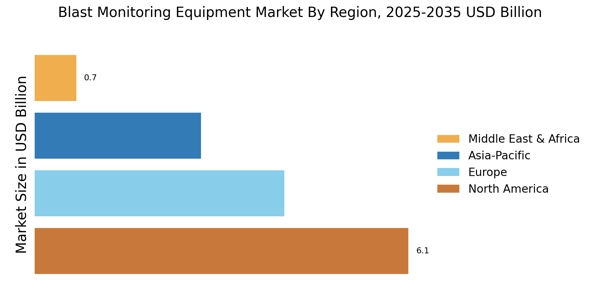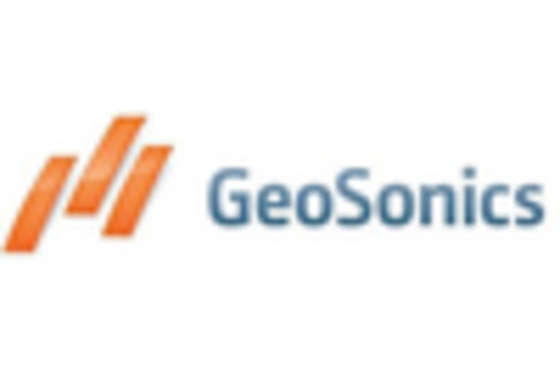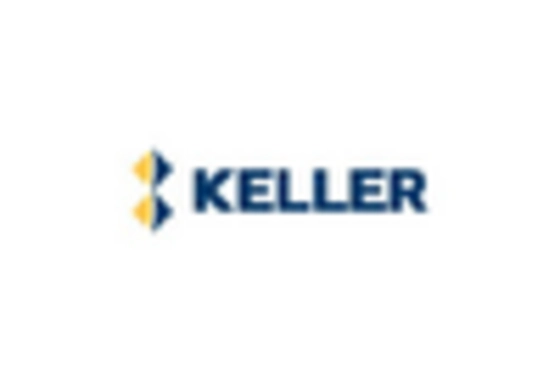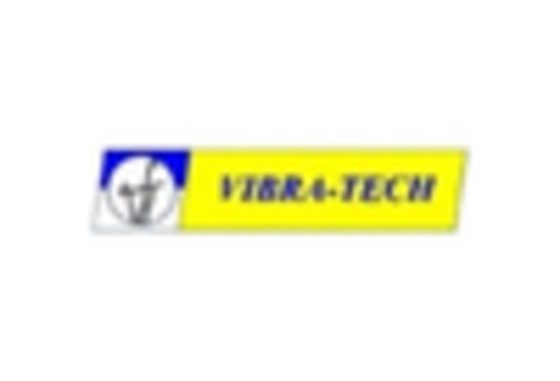Regulatory Compliance and Safety Standards
The Blast Monitoring Equipment Market is significantly influenced by stringent regulatory compliance and safety standards imposed by various governmental bodies. These regulations are designed to ensure the safety of workers and the environment during blasting operations. Compliance with these standards often necessitates the adoption of advanced monitoring equipment that can provide accurate data on blast vibrations and air quality. As industries such as mining and construction face increasing scrutiny, the demand for reliable blast monitoring solutions is expected to rise. This trend is likely to propel the market forward, as companies seek to avoid penalties and enhance their operational safety.
Environmental Concerns and Sustainable Practices
The Blast Monitoring Equipment Market is increasingly shaped by environmental concerns and the push for sustainable practices. As awareness of the environmental impact of blasting operations grows, companies are compelled to adopt monitoring solutions that minimize ecological damage. This trend is leading to the development of equipment that not only monitors blast effects but also assesses environmental parameters such as noise and air quality. The market is likely to see a shift towards eco-friendly monitoring technologies, as industries strive to meet sustainability goals. This shift could potentially open new avenues for growth within the blast monitoring equipment sector.
Growing Demand for Real-Time Monitoring Solutions
The Blast Monitoring Equipment Market is witnessing a growing demand for real-time monitoring solutions, driven by the need for immediate data access and analysis. Industries such as mining, construction, and demolition require timely information to make informed decisions during blasting operations. The ability to monitor blast vibrations, air quality, and other critical parameters in real-time is becoming essential for operational efficiency and safety. This demand is reflected in the increasing investments in advanced monitoring technologies, which are projected to reach a market value of over 1 billion USD by 2026. As companies prioritize safety and efficiency, the market for blast monitoring equipment is likely to expand.
Technological Advancements in Monitoring Equipment
The Blast Monitoring Equipment Market is experiencing a surge in technological advancements that enhance the efficiency and accuracy of monitoring systems. Innovations such as wireless sensor networks and advanced data analytics are becoming increasingly prevalent. These technologies allow for real-time data collection and analysis, which is crucial for effective blast monitoring. The integration of artificial intelligence and machine learning algorithms into monitoring equipment is also noteworthy, as it enables predictive analytics and improves decision-making processes. As a result, the market is projected to grow at a compound annual growth rate of approximately 6.5% over the next five years, driven by the need for more sophisticated monitoring solutions.
Increased Investment in Mining and Construction Sectors
The Blast Monitoring Equipment Market is benefiting from increased investment in the mining and construction sectors. As these industries expand, the need for effective blast monitoring solutions becomes more pronounced. The rise in infrastructure development projects and mineral exploration activities is driving the demand for reliable monitoring equipment. According to industry reports, the construction sector alone is expected to grow by 4% annually, leading to a heightened focus on safety and compliance. Consequently, companies are investing in advanced blast monitoring technologies to mitigate risks associated with blasting operations, thereby propelling market growth.

















Leave a Comment